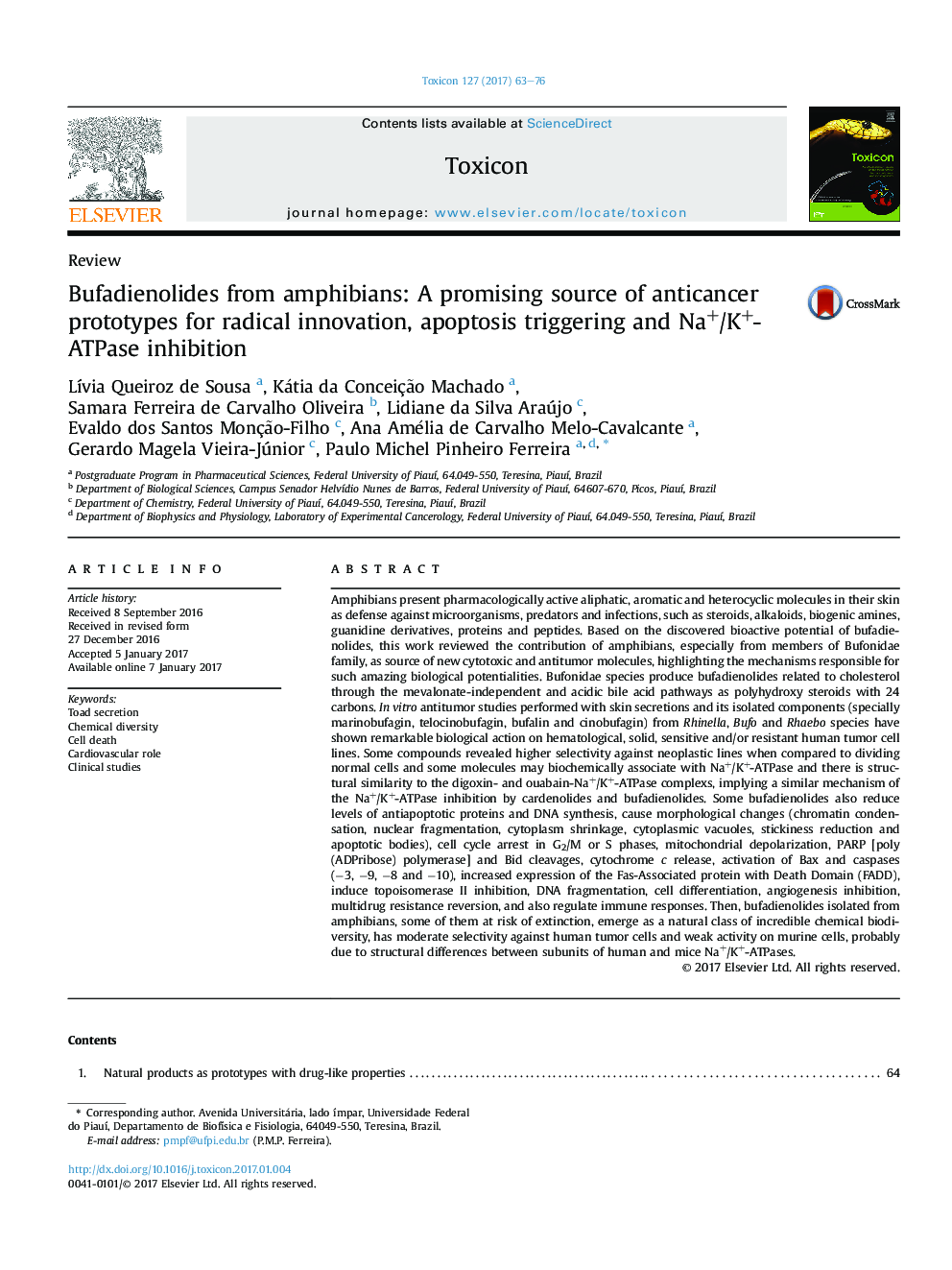| کد مقاله | کد نشریه | سال انتشار | مقاله انگلیسی | نسخه تمام متن |
|---|---|---|---|---|
| 5519605 | 1544109 | 2017 | 14 صفحه PDF | دانلود رایگان |

- Cardenolides and bufadienolides present similar mechanism of Na+/K+-ATPase inhibition.
- Bufadienolides show moderate selectivity against human tumor cells and weak activity on murine cells.
- Bufalin, cinobufagin, telocinobufagin and marinobufagin exhibited remarkable antitumor potential triggered by caspase-dependent apoptosis.
- Bufalin or Cinobufagin have been used in clinical therapy against advanced carcinomas of liver, lung, pancreas and bladder.
Amphibians present pharmacologically active aliphatic, aromatic and heterocyclic molecules in their skin as defense against microorganisms, predators and infections, such as steroids, alkaloids, biogenic amines, guanidine derivatives, proteins and peptides. Based on the discovered bioactive potential of bufadienolides, this work reviewed the contribution of amphibians, especially from members of Bufonidae family, as source of new cytotoxic and antitumor molecules, highlighting the mechanisms responsible for such amazing biological potentialities. Bufonidae species produce bufadienolides related to cholesterol through the mevalonate-independent and acidic bile acid pathways as polyhydroxy steroids with 24 carbons. In vitro antitumor studies performed with skin secretions and its isolated components (specially marinobufagin, telocinobufagin, bufalin and cinobufagin) from Rhinella, Bufo and Rhaebo species have shown remarkable biological action on hematological, solid, sensitive and/or resistant human tumor cell lines. Some compounds revealed higher selectivity against neoplastic lines when compared to dividing normal cells and some molecules may biochemically associate with Na+/K+-ATPase and there is structural similarity to the digoxin- and ouabain-Na+/K+-ATPase complexs, implying a similar mechanism of the Na+/K+-ATPase inhibition by cardenolides and bufadienolides. Some bufadienolides also reduce levels of antiapoptotic proteins and DNA synthesis, cause morphological changes (chromatin condensation, nuclear fragmentation, cytoplasm shrinkage, cytoplasmic vacuoles, stickiness reduction and apoptotic bodies), cell cycle arrest in G2/M or S phases, mitochondrial depolarization, PARP [poly (ADPribose) polymerase] and Bid cleavages, cytochrome c release, activation of Bax and caspases (â3, â9, â8 and â10), increased expression of the Fas-Associated protein with Death Domain (FADD), induce topoisomerase II inhibition, DNA fragmentation, cell differentiation, angiogenesis inhibition, multidrug resistance reversion, and also regulate immune responses. Then, bufadienolides isolated from amphibians, some of them at risk of extinction, emerge as a natural class of incredible chemical biodiversity, has moderate selectivity against human tumor cells and weak activity on murine cells, probably due to structural differences between subunits of human and mice Na+/K+-ATPases.
178
Journal: Toxicon - Volume 127, 1 March 2017, Pages 63-76